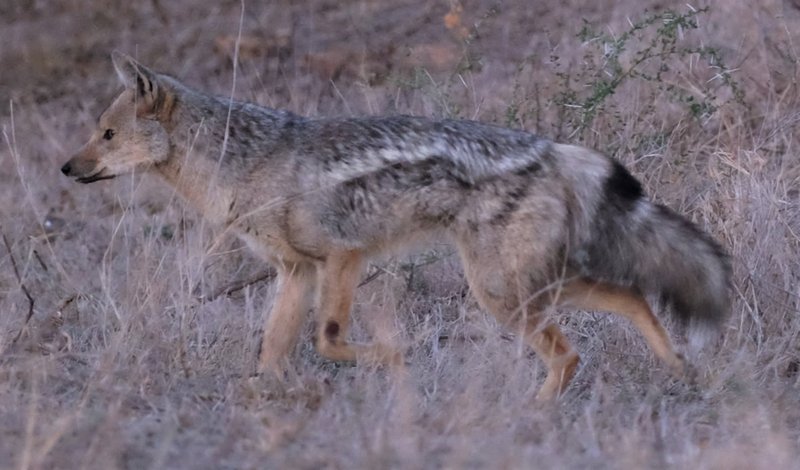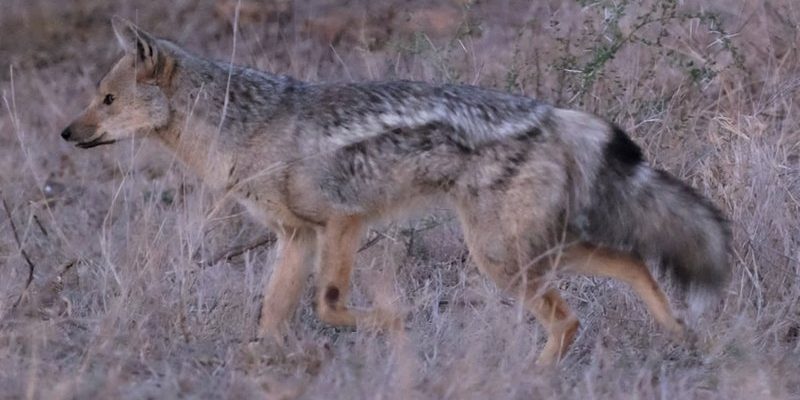
Let’s dive into how this clever jackal has shaped cultural narratives, showing up in myths, fables, and even music. It’s like unraveling a thread that weaves through the fabric of human imagination, revealing how we perceive animals and, in a way, ourselves. You might be surprised at the range of stories and meanings people have attached to this often-misunderstood animal!
Understanding the Side-Striped Jackal
First, let’s get to know the Side-Striped Jackal a bit better. This species, scientifically known as *Canis adustus*, is known for its slender body and distinct dark stripes running along its sides. It primarily roams the grasslands and woodlands of Central and Southern Africa. Unlike its more famous cousins, the golden jackal or the black-backed jackal, the Side-Striped Jackal tends to be more elusive and less vocal, favoring a life that is secretive and resourceful.
You might be wondering what role this creature plays in its ecosystem. Well, the Side-Striped Jackal is a scavenger and an opportunistic feeder, often playing the essential role of a cleanup crew in its habitat. By eating carrion and small rodents, it helps maintain a balance in its environment. Culturally, its adaptability and smart foraging habits have made it a fitting character in many folk stories—often portraying cleverness and survival instincts.
Over time, this jackal has earned a reputation in various cultures not just as a scavenger, but as a symbol of intelligence and cunning, characteristics often celebrated in folklore. It’s fascinating how a creature that thrives on its ability to be resourceful can inspire such rich narratives!
The Side-Striped Jackal in African Folklore
In many African cultures, animals play crucial roles in stories that pass down morals or lessons. The Side-Striped Jackal is no exception. For example, among the Tswana people of Southern Africa, there are tales featuring the jackal as a clever trickster. These stories often highlight themes of wit overcoming strength—a common motif in trickster tales.
Let me share a quick story: once, a Side-Striped Jackal outsmarted a lion, who was known for his brute strength. The jackal devised a plan that involved pretending to befriend the lion, only to lead him into a trap. Through cleverness, the jackal not only saved himself but also taught the lion a memorable lesson about underestimating others.
This idea of using intelligence over force resonates deeply in many cultures, reflecting an understanding that sometimes, brainpower can prevail where brawn might fail. It’s this clever portrayal that allows audiences to connect with the jackal on a deeper level, evolving it from merely a creature of the wild to a character bursting with personality.
Symbolism of the Side-Striped Jackal
The Side-Striped Jackal often symbolizes various traits in folktales and local beliefs. Often, it’s associated with cunningness, adaptability, and survival. Because of its scavenging habits, some cultures view the jackal as a reminder of the importance of resourcefulness and not being wasteful.
In many stories, the jackal’s ability to adapt to its surroundings is emphasized. For example, when resources are scarce or when faced with danger, the jackal cleverly finds ways to navigate challenges, making it a powerful symbol of resilience.
Here’s the thing—this representation of survival can be quite relatable. In tough times, we all look for ways to adapt and maneuver through life’s challenges. The jackal embodies that instinct, making it an influential figure in stories about perseverance and cleverness.
Literary Depictions of the Side-Striped Jackal
The Side-Striped Jackal has also made its mark in literature. Various authors have incorporated this creature into their works, often using it to explore themes of intelligence, adaptability, and the moral complexities of survival.
For instance, you’ll find jackals depicted in works where they act as cunning thieves or characters who manipulate situations to their advantage. These portrayals can be seen as an exploration of the gray areas of morality—showing that sometimes, survival may come at a cost.
If you think about it, these stories often mirror human nature. We all face choices that test our ethics, and through the lens of the jackal, authors can explore those slippery slopes. Readers are entertained, but they also reflect on their own lives and decisions, thanks to the clever antics of this unique animal.
The Side-Striped Jackal in Modern Media
In today’s world, the Side-Striped Jackal is still making an impact, now appearing in various forms of modern media. While it might not be as well-known as some other animals, you can find references to this intriguing jackal in films, documentaries, and even social media.
Shows that focus on wildlife often highlight the Side-Striped Jackal, showcasing its fascinating behavior and adaptations. These portrayals help to elevate public interest and awareness about the species, ultimately fostering appreciation for wildlife conservation.
Plus, its unique appearance and behavior can inspire creativity in storytelling and art. Artists and filmmakers sometimes use the jackal as a symbol of cleverness and adaptation, connecting it to broader themes of survival in a changing world.
Lessons from the Side-Striped Jackal
So, what can we learn from the Side-Striped Jackal? Honestly, it’s a powerful reminder about the importance of adaptability and cleverness in navigating life’s challenges. In stories, this jackal shows us that using our heads can often lead to better outcomes than relying solely on strength.
Beyond that, the Side-Striped Jackal teaches us about the value of resourcefulness. In our daily lives, whether in personal or professional situations, being able to think on your feet and adjust to new circumstances is crucial. This kind of thinking can help us overcome obstacles, just like the jackal does in its natural habitat.
Ultimately, the jackal serves as an inspiring figure, reminding us that intelligence and adaptability can guide us through the wild adventure that is life.
Cultural Significance and Conservation
As we celebrate the Side-Striped Jackal’s role in culture and folklore, it’s vital to recognize the importance of conservation efforts for this and other wildlife. Understanding cultural significance can also bolster support for protecting their natural habitats. Unfortunately, habitat loss and human-wildlife conflict threaten many animals, including the Side-Striped Jackal.
By appreciating the tales and representations of the Side-Striped Jackal, we also cultivate a sense of responsibility towards its conservation. When people connect emotionally with an animal through stories, they’re more likely to support efforts to protect it.
Imagine a world where the clever Side-Striped Jackal continues to thrive, not just in stories but in the real world. Encouraging local communities to respect and preserve the jackal’s habitat can ensure these intriguing stories continue for generations to come.
In conclusion, the Side-Striped Jackal is more than just a creature of the wild; it’s a symbol of cunning, adaptability, and resilience found in cultural narratives and folklore. By exploring its significance, we can deepen our understanding of the interconnectedness between humans and nature—helping to foster respect and appreciation for the beautiful diversity of life on our planet.

